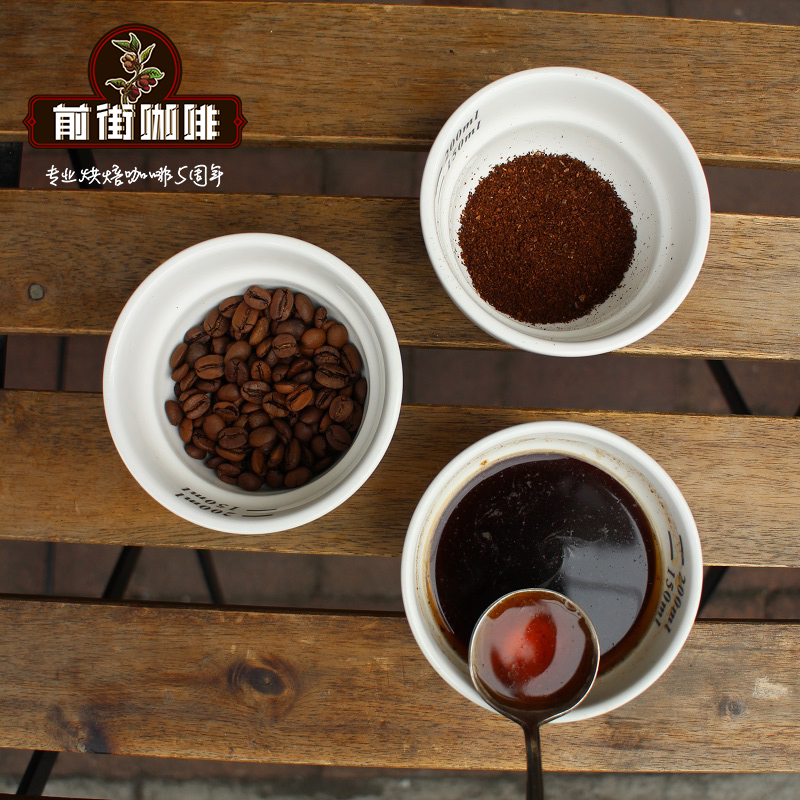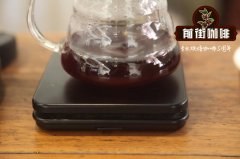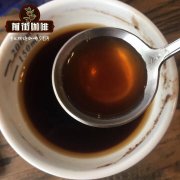How to use SCAA Flavor Wheel? The sipping skills of the green label of the Emerald Manor? How to evaluate consistency,

Professional coffee knowledge exchange More coffee bean information Please pay attention to coffee workshop (Weixin Official Accounts cafe_style)
How to use SCAA Flavor Wheel? Jade manor green label sipping tips? How to evaluate consistency, cleanliness and taste?
Green coffee beans are sent around the world before they are cup-tested by the coffee farmers association or refining factory where they are produced, that is, they are tested to confirm the aroma and taste of the beans, and then sorted again before being shipped. The real cup test also has standardized specifications for "roasting" and "evaluation methods"; so in other words, the core purpose of the cup test is to drink the most original flavor of a coffee bean "all conditions are the same". The importance of flavor wheels lies in unifying the language in which different people describe coffee taste. This consistency and the results of taste sensory research help operators communicate about coffee taste and decide how and where to grow coffee beans. Professional coffee organizations such as the American Specialty Coffee Association (SCAA) have more detailed cup scales, in addition to the above, but also for "uniformity"(uniformity),"cleanliness"(cleanup),"mouth feel"(mouthfeel),"overall impression"(overall),"defect"(taint),"fault"(fault) and other items. Therefore, it is a very scientific method to judge the flavor and taste of coffee by cup test and identify the quality of a coffee. Usually we use water powder ratio of 1 to 18, water temperature 94 degrees, water after soaking for 4 minutes and then start breaking the residue, cup test coffee beans flavor
This coffee flavor wheel can be used by both general coffee lovers and professional cup testers. The emphasis is on "carefully tasting coffee". Coffee tasting has different aromas and tastes at different stages:
1. freshly ground coffee aroma
2. The aroma of coffee brewing
3. ... the flavor of sipping coffee into the mouth.
STEP.2 Using the Flavor Wheel Starts at the Center
It is suggested to start from the center and develop from the outside. The most basic taste is concentrated in the center position, and the more detailed flavor and taste are extended outward. For example, when tasting, you can stop at a position and slowly extend it outward, and you will get a more accurate description. For example, when you drink coffee, you can feel the aroma of flowers in your mouth. You can extend to the flower flavor block to find out more directions for description. The use of coffee flavor block is not limited to one, because there may be fruit, flowers and other diverse flavors, you can repeat the test steps many times, confirm that you can fully describe the coffee flavor, the basic coffee flavor wheel usage has been mastered.
STEP.3 The adjectives on the flavor wheel
Flavor wheel charts are words used in the World Coffee Research Sensory Lexicon standard. Most flavor wheel users will not be trained to use this standard attribute theory for coffee science training, but vocabulary can still determine the standard attributes on the flavor wheel, and cup testers can seek clear and explicit descriptive vocabulary.
STEP.4 It is recommended to record the memory aroma and taste experienced
You can refer to the vocabulary of WCR as the reference explanation basis, record the aroma and taste you taste, and find the corresponding words according to the chart blocks, which can be cited as the positioning taste basis.
STEP.5 Relevance of adjectives
To understand the attributes of the vocabulary, go back to the center of the graph and use a specific attribute to describe the coffee you just tasted, and look at the surrounding attributes. There are spaces between attributes with different spatial distances. If there are two attribute units connected, it means that these attributes are related; if there are small spaces, it means that the relationship is not so close. The greater the separation distance, the less similar the attributes are.
STEP.5 The color indicated on the flavor wheel means
People's vision, will be affected by the color of food, and then produce impressions and taste and other sensory links. For this reason, visual terms can be used to describe the taste of coffee, for example: coffee may taste "bright", with this awareness, you can see the color on the flavor wheel, the effort to link various descriptions and colors to express this attribute, can help people who are uncertain about the direction to find descriptors, such as feeling nuts, can be guided by the flavor wheel to the coffee color block, looking for similar taste adjectives such as hazelnut or almond.
SCAA coffee flavor wheel is only a reference scale, each person drinks coffee to feel the taste and aroma is not the same, because everyone's experience or cognition is not necessarily the same, described coffee taste will have differences. No matter correct, every opinion has reference value, and you can speak your own opinions frankly while drinking coffee.
Coffee beans are not immediately roasted cup test, but placed for a period of time to mature, so that coffee beans have a period of awakening time and more complete flavor development; usually cup test competition with the standard cup test time is coffee beans roasted between 8 and 24 hours, and a bean will have more than three cups test, so that the competition judges can evaluate the consistency of coffee flavor.
The purpose of the cup test:
1. Coffee quality is evaluated through scientific methods.
2. For beans of the same origin but different baking methods, judge which baking method and baking grade are best.
3. Beans of different origins, baking methods and grades, determine which origin is the best.
What does the cup test require?
1.4--5 Seed raw beans and ripe beans
2. grinder dosers
3. dishes
4. glass
5. tablespoon
6. empty bowl
7. scale
8. electric kettle
9. water
10. Cup meter
Coffee cup brewing standard:
Dry cleaning bean grinder before grinding, water quality TDS specification: 125--175ppm (Total Dissolved Solids), water and powder ratio: 1 : 19 --1: 20 (W/W)
Cup Test Technique:
Smell dry incense (within 10 minutes after grinding)
Inject hot water (93℃, within 10 min after grinding)
Smelling wet fragrance (within 15 minutes after grinding)
Slag breaking technique (surface disturbance)
Sip (high, medium and low temperatures)
A sip 5--10 cc
Dwell time 5- 10 seconds
Interval 15--10 seconds
Cup Test Procedure:
1. Place a plate containing four kinds of raw beans and cooked beans on the table. Choose four kinds of raw beans and four kinds of cooked beans. Each dish of raw and cooked beans is accompanied by a glass, spoon and empty bowl.
2. Pick up the plates containing raw beans and cooked beans respectively, smell them, judge the flavor, confirm whether the raw beans are moldy and the aroma of cooked beans, and record the flavor of each bean in the cup test table.
3. After grinding different kinds of coffee beans, put 8--10 grams of coffee powder into a glass respectively, then pour 120 ml--150 ml of hot water at 92 ℃ into each cup, wait for a moment, observe the solubility of coffee powder after precipitation.
4. Stir lightly with a spoon over the top of the thick coffee and put your nose in to smell it, then record the flavor on a cup meter.
5. Spoon coffee grounds off the surface and scoop coffee into your mouth. Special attention should be paid here, to "whoosh" a coffee into the mouth, but do not swallow, and use the tongue to the top of the coffee liquid to the front teeth, to determine its taste. Let the coffee liquid circulate in your mouth and chew on its flavor; finally, spit the coffee liquid in your mouth into an empty bowl.
6. Record the coffee beans 'performance and flavor at each stage in the cup test table to complete the cup test.
The main contents of the cup table, as well as the flavor and taste of a coffee
1. Fragrance: The aroma of coffee beans.
2. Aroma: The smell of coffee after brewing.
3. Body: The texture of coffee in the mouth.
4. Flavor: The taste of coffee as it enters the mouth.
5. Acidity: Whether the acidity of coffee is bright, lively, sharp, or dull.
6. Sweetness: The intensity of sweetness left by coffee as it swirls in the mouth.
7. Aftertaste: The flavor and smell of coffee after it is tasted in the mouth and spat out.
To SCAA (American Fine Coffee Association) standards to do cup test, even the indoor temperature, humidity should be carefully controlled. In terms of scores, 95 to 100 is Oustanding, 85 to 89.99 is Excellent, 80 to 84.99 is Very Good, and generally more than 80 is fine coffee.
Front Street Cup Test [Emerald Manor Green Label] Results:
Delicate acidity in the mouth, Panama Emerald Estate [Green Label Rose Summer], rich flavor layers, instant burst of floral, fruity! Flavors vary with temperature, from jasmine and citrus to berry, honeysuckle, and finally fruit sugar, oolong tea, and finally hami melon aftertaste.
Peach sweetness and honey aroma, fresh and comfortable, bright and balanced, the aroma is very strong, fruity sweetness and strong sweetness, and when the mouth with strawberry fruit and strong but gentle citrus citric acid, drink not like your impression of coffee.
Important Notice :
前街咖啡 FrontStreet Coffee has moved to new addredd:
FrontStreet Coffee Address: 315,Donghua East Road,GuangZhou
Tel:020 38364473
- Prev

Description of coffee bean flavor of Aoqiuya small farmers in khaki district of Ecuador
Professional coffee knowledge exchange more coffee bean information please pay attention to the coffee workshop (Wechat official account cafe_style) flavor description: wine and dried orange peel, citrus juice, grapefruit, orange juicy and sweet taste, the middle and rear section has the characteristics of melon producing areas of almonds, malt sweet, and a sweet finish of maple syrup and sweet herbs. Located in Colombia and Secret in South America
- Next

Is it good to wash sea turtle beans in Ecuador? how to wash the organic coffee beans in the Great Turtle Islands of Ecuador?
Professional coffee knowledge exchange more coffee bean information Please pay attention to the coffee workshop (Wechat official account cafe_style) has a relatively rugged bean shape, 17-18 eyes, but different from beans such as beans. Because Ecuadorian coffee beans come from the Galapagos Islands, a typical island climate, and a well-preserved virgin forest, it can be described as an uncle with a Loli girl.
Related
- Detailed explanation of Jadeite planting Land in Panamanian Jadeite Manor introduction to the grading system of Jadeite competitive bidding, Red bid, Green bid and Rose Summer
- Story of Coffee planting in Brenka region of Costa Rica Stonehenge Manor anaerobic heavy honey treatment of flavor mouth
- What's on the barrel of Blue Mountain Coffee beans?
- Can American coffee also pull flowers? How to use hot American style to pull out a good-looking pattern?
- Can you make a cold extract with coffee beans? What is the right proportion for cold-extracted coffee formula?
- Indonesian PWN Gold Mandrine Coffee Origin Features Flavor How to Chong? Mandolin coffee is American.
- A brief introduction to the flavor characteristics of Brazilian yellow bourbon coffee beans
- What is the effect of different water quality on the flavor of cold-extracted coffee? What kind of water is best for brewing coffee?
- Why do you think of Rose Summer whenever you mention Panamanian coffee?
- Introduction to the characteristics of authentic blue mountain coffee bean producing areas? What is the CIB Coffee Authority in Jamaica?

